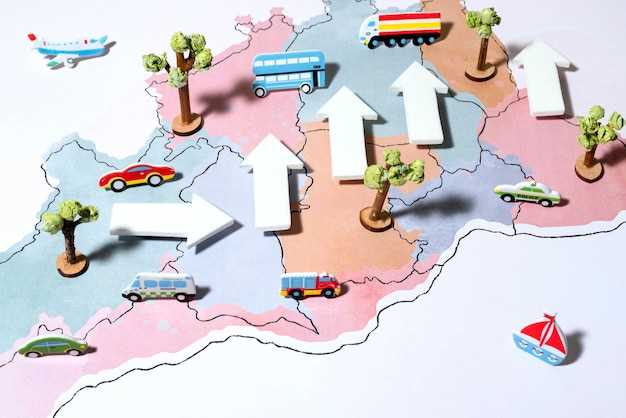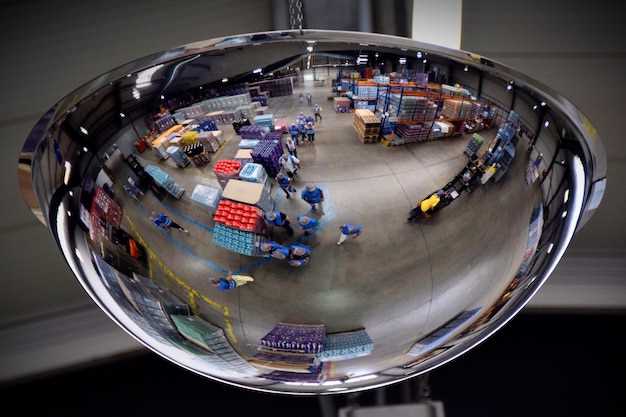Map your suppliers, manufacturing sites, and distribution nodes across international routes to identify single points of failure and to deliver resilience over the long term. This helps you spot vulnerabilities before they disrupt customers, enabling a leading approach to risk management.
Global supply chains are networks that coordinate the flow of goods, information, and finances across borders to deliver products to customers. This term sits at the core of the global industry and covers sourcing from suppliers in asia and swift delivery to markets worldwide.
Key components include major elements: suppliers, manufacturers, logistics, and information systems, while government policy shapes how they operate. An expert assessment helps prioritize diversification, and a clear data view supports keeping costs predictable across networks in a manner that fits operations.
Impacts span costs, reliability, and resilience. A well-designed global chain helps reduce total landed cost, while also delivering measurable benefits in service levels. To gauge progress, track metrics such as lead time, on-time delivery, and supplier risk scores. It can expose operations to weather events and disasters. Keeping buffer stock and multi-region sourcing is a major approach for continuity, especially in asia hubs where port congestion can ripple through international routes and affect delivery times for customers worldwide.
Global Supply Chains: Definition, Components, Impacts, and Fragility from Political Instability

Diversify your vendor base now to reduce crises exposure; identify at least three alternative suppliers for each essential product and map the full delivery times. Please document the plan in a central planning tool and assign clear owners to track progress and accountability.
Global supply chains are networks that connect raw materials, components, and finished products through sourcing, manufacturing, logistics, and information flows that span borders. They rely on predictable rhythms across sectors to move everything from basic inputs to high‑tech goods, with cross‑border coordination forming the backbone of modern commerce.
Key components include procurement, production, freight management, distribution, inventory control, and digital systems that provide visibility, traceability, and compliance. A strong setup links supplier performance to production schedules, while clear data flows keep inventories aligned with demand signals and capacity constraints.
Impacts show up in cost volatility, service level expectations, and the ability to adapt to shifts in demand across sectors. Rates for transport, tariffs, and currency moves shape margins, while freight reliability and energy availability influence on‑time delivery and total lead times.
Fragility from political instability appears as policy shifts, sanctions, border closures, and regulatory bottlenecks that disrupt reaching key suppliers or components. Crises can halt electricity supply or generation in critical hubs, amplifying delays and complicating recovery planning.
Mitigation initiatives include scenario planning, multi‑sourcing, nearshoring where feasible, maintaining safety stock for high‑risk items, and diversifying transportation routes. Establishing strong partner relationships helps keep critical products flowing during disruptions and reduces bounce‑back times for recovery.
Better resilience comes from ongoing supplier health monitoring, proactive compliance checks, and shared dashboards that enable reaching milestones together. Common standards and transparent communication across vendors and customers minimize misALIGNMENTS and speed responses to changes.
Take a proactive stance: embed resilience into every step, from procurement to last‑mile delivery, and prioritize initiatives that protect essential product availability. Everything from planning and inventory to freight rates and energy reliability matters for sustained performance, so act now to reduce exposure and gain confidence in a volatile environment.
Definition: What constitutes a global supply chain?
Start with a concrete map of the network: identify the vendor nodes, production sites, ports, and retailers, then outline the course of activities that connect materials to delivery. The global chain spans abroad suppliers, domestic hubs, and cross-border imports; highlight intricate flows, and align price and terms at every link. Keep the map simple, and show who touches each material, where phase links occur, and where risk sits.
Different vendors offer various materials and components; the difference in lead times, quality checks, and contract terms drives risk. Track performance across critical phases, and invest in diligence to verify capability, capacity, and compliance, highlighting where improvements are needed.
Abroad sourcing requires attention to government policy, tariffs, and rate changes; british firms participate in supplier programs to diversify risk across different markets.
Here is a short checklist to guide decisions: map vendors and currencies, track delivery milestones and inventory, compare price and rates across locales, monitor imports and materials quality, and invest in diligence to sustain success. Use grids to visualize status across phases.
Core components to map: suppliers, manufacturers, logistics, information flows, and finance
Implement a unified map of the five core components: suppliers, manufacturers, logistics, information flows, and finance, and pair it with a live KPI dashboard. Align data standards, automate data feeds, and assign clear owners to reduce latency and improve performance. According to live data, set target rate for on-time delivery, order cycle duration, and finance-to-cash metrics that support resilient selling and steady demand management.
Identify outposts by geography; categorize core suppliers versus growing partners, and map regional footprints in africa și brazil. For each supplier, capture capacity, unit costs, and lead times to anticipate demand swings in summer and peak seasons. Track products by category and assign risk scores to highlight dependencies across economies, ensuring rights-compliant sourcing and supplier performance.
Define standardized information flows across orders, invoices, and shipment notices; implement APIs or EDI to feed a cohesive intricate information layer that connects suppliers to manufacturers. Maintain detailed audit trails with timestamps, enabling rapid issue resolution. Include instrumente cum ar fi fuchs equipment records to reflect operational readiness of outposts and factories.
Logistică and haulage strategy: plan regional haulage routes, consolidate shipments, and minimize wasteful miles. Monitor route-level transit times, carrier performance, and costs; align these metrics with the finance module to improve cash flow and keep inventories lean. Use a compact toolset to simulate disruptions and identify major bottlenecks that could trigger a crisis.
Finance and risk management: track payment terms, discounts, and currency exposures; tie funding to demand signals and product lifecycle. Build a set of dashboards for buyers and suppliers, ensuring timely selling and keeping strong rights management across trading partners. In world markets, this approach supports major economies in africa, brazil, and other regions through resilient supply chains.
Impacts on operations and customers: delays, costs, and service levels

Start by mapping supply nodes and setting a clear buffer for critical materials. Sourcing locally reduces transit time and customs exposure, which helps minimize disruptions. Build a cross-functional group of procurement, planning, and operations to align priorities; theyre ready to act when a shipment slips. Invest in tools that provide real-time visibility across suppliers and lanes, especially for british suppliers and others in high-risk regions. Highlight alternatives to a single supplier and prepare a plan to switch quickly without slowing production, including contingency options. The recommendation: raise the minimum stock for top-25% most critical items and ramp capacity when incoming materials arrive on schedule.
Delays ripple through planning horizons. Ocean shipments face average 4-6 days of extra time, while customs clearance in busy corridors adds 2-4 days. In areas prone to natural events, delays can spike to 7-12 days, and extreme weather at hubs can add 3-5 days. These delays affect thousands of orders and push service levels down unless mitigated. The following step is to quantify exposure by lane, supplier, and product family to target mitigation where it matters most, including critical materials.
Costs rise when stockouts trigger expedited shipping and air freight surcharges. For top-priority SKUs, expedited transport can add 6-12% per order, and production downtime adds 3-7% in lost throughput. To minimize costs, pursue alternatives such as nearshoring, multiple suppliers, and locally sourced materials where feasible. This strategy is highly useful to stabilize materials flows among global and regional networks. Invest in supplier-managed inventory and set clear replenishment targets; use tools to monitor performance and flag gaps before orders slip. This approach improves resilience without inflating overhead and supports sustainable planning.
Customer-facing service levels suffer when lead times extend beyond promised windows. In a typical mid-market portfolio, delays push order fulfillment from 95% on-time to 87-90% during disruption periods. To protect customers, publish transparent messages about expected delays and provide alternative options, including backorder windows and switching to readily available substitutes. Use a consistent message across channels and rely on every player in the chain to share data so service levels recover quickly. Provide proactive updates for thousands of orders and ensure a reliable escalation path for exceptions. This protects businesss continuity and ensures a consistent experience for customers.
To build a resilient system, run weekly reviews of materials, customs clearance, and supplier performance. Create buffers for high-risk items, especially in critical categories, and test contingency plans in simple simulations. Expand the supplier base to create alternatives and reduce choke points in the network. Partner with british logistics providers to diversify transport modes and maintain a steady ramp in case of demand spikes. Communicate a clear message to customers about steps you take to minimize delays. The sustainable aim is stronger service levels and lower costs across thousands of orders.
Disruption channels from political instability: trade policy, border controls, sanctions, and currency risk
Diversifying suppliers and building local buffers reduces exposure to policy shocks. If youre a manager of a fragile supply network, map disruption channels and assign a risk owner for trade policy, border controls, sanctions, and currency risk.
Trade policy can spike input costs or alter availability within a week. A glance at recent reports shows tariffs and quota twists hit small and medium buyers hardest in developing markets, lift landed costs, and tighten cash flow. To counter, switch to a dual-sourcing model, diversify origins, and keep regional networks active to cut bottlenecks and haulage delays during crisis.
Border controls and sanctions add delays and create public bottlenecks at crossing points. Build buffer stock for week-long cycles, and diversify transport modes to avoid single chokepoints. In places like glasgow and other major hubs, digitizing declarations speeds clearance and reduces idle time for local fishing fleets and general freight alike.
Currency risk compounds the impact of political shocks, especially when revenue streams cross borders and invoicing spans USD, euro, and emerging-market currencies. Use hedges, multi-currency invoicing, and clear risk ownership to limit swings during volatile periods. Public visibility of exposure helps youre teams adjust pricing and sourcing quickly, preserving revenue even as exchange rates move.
| Disruption channel | Mechanism | Mitigation actions | Practical examples |
|---|---|---|---|
| Trade policy | Tariffs, quotas, procurement rules | Diversifying suppliers, dual sourcing, regional reps, switching to multiple origin routes | America-based imports facing tariff changes; developing countries adjusting supplier mix to avoid a single price spike |
| Border controls | Customs delays, tighter checks, documentation burdens | Buffer stock, diversified haulage modes, nearshoring where feasible | Week-long clearance improvements at busy crossings; fishing and perishable goods moved via faster routes |
| Sanctions | Targeted or broad restrictions on trade or access to suppliers | Ongoing risk monitoring, public supplier maps, diversifying revenue streams | Switching to compliant suppliers in multiple regions; ensuring no single link governs critical inputs |
| Currency risk | Exchange-rate volatility affecting price and revenue | Currency hedges, multi-currency invoicing, clear risk governance | Accounts receivable in USD and local currencies; weekly reviews of FX exposure |
Practical resilience measures: diversify suppliers, nearshoring, inventory buffers, and end-to-end visibility
Diversify suppliers across regions to reduce exposure to regional shocks and public events; there are opportunities to build a multi-region network that includes core partners in Europe, North America, and Asia, and even Chinese suppliers where appropriate, to strengthen resource resilience. Leaders succeed when theyre networks adapt quickly during severe disruptions and weather-related delays, preserving delivery to customers and maintaining public confidence.
-
Diversify suppliers: map critical resources and tier-1/2 suppliers across regions, maintain at least two sources per key material, and set a target share of total spend per supplier to avoid over-dependence. Track public risk indicators, supplier health, and credit rates; update risk profiles quarterly. This supports resilience during forced disruptions and helps leaders succeed when delivery is needed most.
-
Nearshoring: prioritize production in centres close to major markets to shorten delivery times and reduce exposure to long ocean moves. Compare labour costs, reliability, and weather risk; pilot with a subset of components for 6-12 months, then scale if performance is solid. Align with governments’ incentives and term contracts to secure stability while maintaining flexibility.
-
Inventory buffers: set safety reserves for critical components and finished goods with clear targets. For high-turn items, hold 4-8 weeks of finished goods and 2-6 weeks of components; review weekly and adjust in response to demand signals and supply risk. Maintain reserves and consider renewable energy sourcing to reduce energy risk and costs. This helps during severe demand swings and prevents interruptions in selling channels.
-
End-to-end visibility: deploy a unified platform that collects data from suppliers, manufacturers, carriers, and warehouses into a single dashboard. Use standard data fields so leaders can run what-if scenarios and monitor key indicators, such as on-time delivery rates, stock availability, and transport weather patterns. Whether a supplier faces a shutdown or a port gridlock, you can respond quickly and maintain service levels; this also supports public reporting and collaboration among centres and governments.

 What Are Global Supply Chains – Definition, Key Components, and Impacts">
What Are Global Supply Chains – Definition, Key Components, and Impacts">
